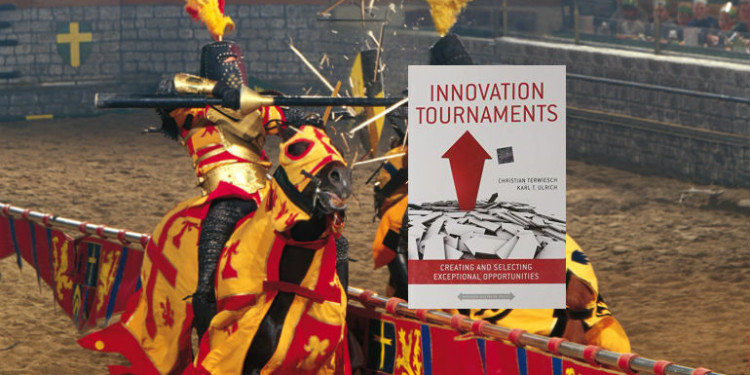Innovation Tournaments

Innovation Tournaments by Christian Terwiesch and Karl Ulrich
Innovation management is currently enjoying a lot of coverage in business books and is positioned as the latest corporate competitive advantage. Being known as innovative is the hallmark of success and differentiation in the market. As the outcome of innovation is typically a new product or service, the question becomes: “how do I most effectively generate new ideas which will translate into profitable and market dominating products?’ In Innovation Tournaments, authors Christian Terwiesch and Karl Ulrich advocate a tournament model for the generation of successful ideas.
They point to the motion picture and pharmaceutical industries as examples of many product introductions leading to only a few successes. Likewise, they highlight American Idol as an example of a classic tournament whose purpose it is to identify a single performer from among thousands. Across many industries and businesses, the problem of generating, filtering, and finding profitable ideas from among many options. Moreover, once multiple projects are launched, there is a cost in managing and reviewing them. Projects which are “teetering on the edge of termination” consume excessive amounts of management time.
For a successful innovation, exceptions are the goal
Terwiesch and Ulrich argue that the best way to find great ideas is not to increase the number of ideas nor their quality, but to increase their variance. Its only by seeing the breadth and spread of ideas that one can determine which should rise to the top and command investment dollars. A predominant theme in business training is the elimination of variance. Efficiency and process-centric methodologies like Six Sigma attempt to standardize and homogenize processes and outputs. Although variance elimination and process optimization are king once an enterprise or product/service is up and running, during the creation process, the messiness of idea generation is what pays off.
Chaos increases new business. Order increases profits.
Innovation tournaments come in many shapes and sizes. The authors offer up several key choices to make as you design your approach:
- Open or closed? – Can anyone apply or is there a criteria in place to get in?
- Pure cascade or renewal and iteration? – Does the tournament proceed like a single-elimination sports competition or can ideas get refined and come back into the process?
- One or multiple rounds? – Does everything take place in one day or are there multiple rounds where the winner of one round proceeds to the next round?
- Absolute or relative filters? – What criteria are used to judge the entries? Absolute or relative?
Tournaments are, of course, the second best way to find the winning idea. The best way would be to implement a formula which selected the winning idea based solely on objective criteria.
In this video, Karl Ulrich describes two key levers for designing innovation tournaments. His first point is that as the number of ideas generated increases, the rate of quality increases rapidly, but then tapers off (i.e., based on his research the quality of ideas increases for the first 100-200 ideas, but does not improve substantially after that). His second point is that “variance is your friend” because it is “inexpensive to throw out the bad ideas.” This is a strong argument for open innovation. The book’s website offers spreadsheets and links to open tournament websites.







